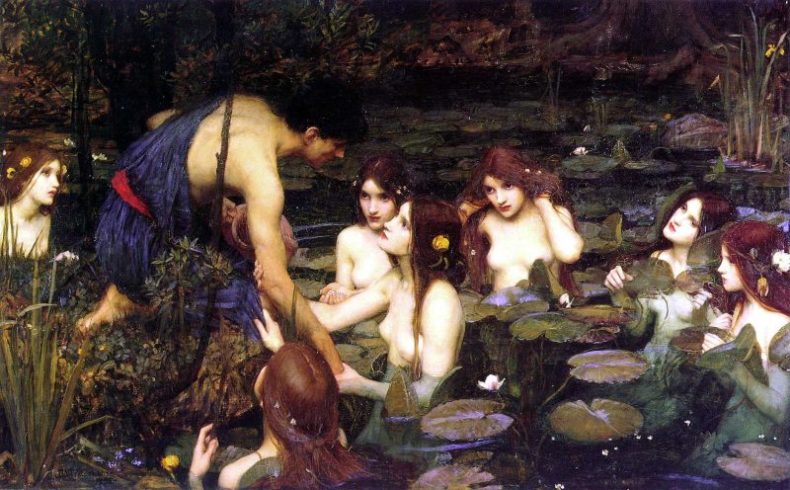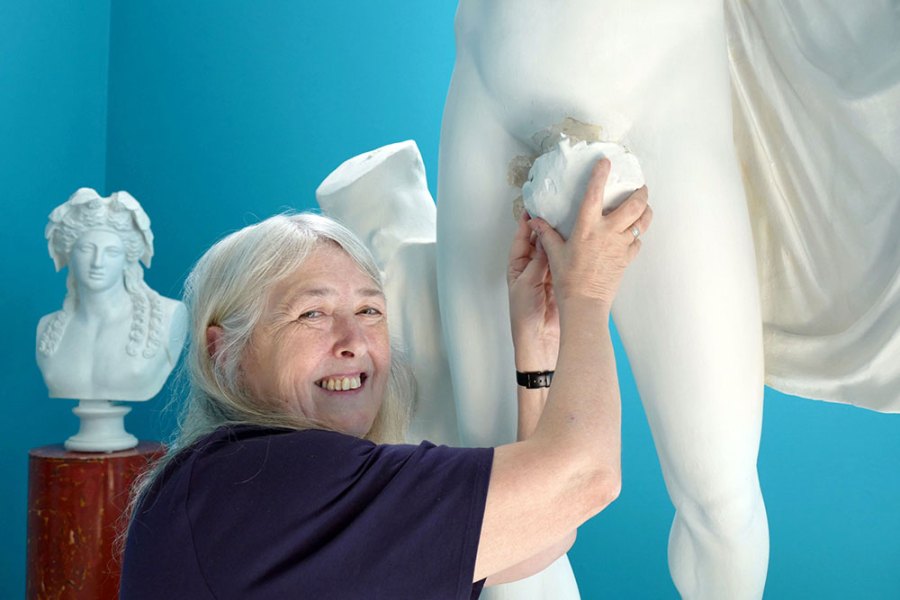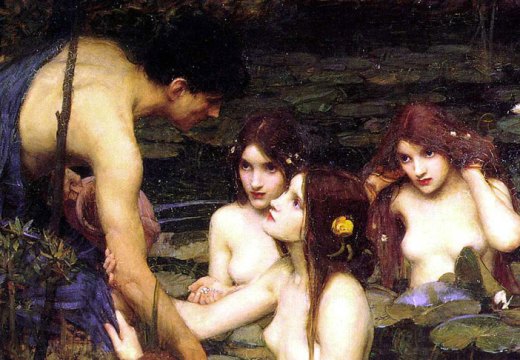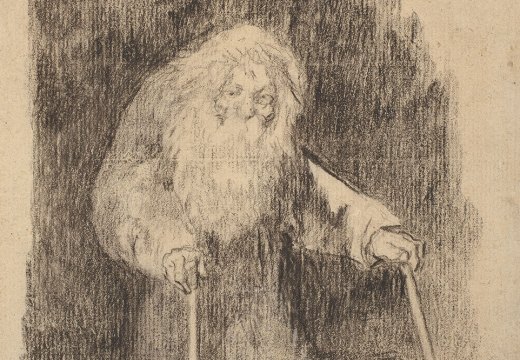Subversiveness is so fashionable among Britain’s intelligentsia as to be almost a cliché: witness Ian Hislop’s recent exhibition on dissent at the British Museum. It comes as no surprise, therefore, to find Mary Beard, in her latest programme for the BBC, confessing that she enjoys Titian’s Venus of Urbino (c. 1534) ‘in a slightly subversive way’: by imagining that she and the unknown woman depicted are ‘giggling at those blokes who are leering at us’. But how far does the history of Western art, composed for the most part by and for men, really lend itself to subversive interpretations? Are women doomed to feel uncomfortable in front of female nudes, with ‘their insistent sexuality and a very elite male way of looking’?
These are just some of the questions raised in Episode One of The Shock of the Nude, entitled ‘The Body Beautiful’, which was screened on BBC Two on Monday evening just after the watershed. Episode Two, ‘Under the Skin’, will follow next week. It will aim to present ‘an alternative story of the nude’, and deal with modern issues concerning the nude and disability, black and transgender nudes, and child nudity.
The programme has an air of the risqué and taboo-breaking. In Episode One, there are close-ups of Courbet’s L’Origine du Monde (1866), formerly owned by a series of male collectors and now in the Musée d’Orsay. Beard describes the painting as ‘a full-on picture of a woman’s genitalia and bushy pubic hair’ that is ‘almost hyper-realistic’. As she points out, all we see is the sexual trunk: head, feet and hands, the thinking and doing parts, are missing.
Although the museum website praises the painting’s ‘delicate amber colour scheme’, Beard is surely right to be sceptical about the way in which representations of women as objects of male desire have been unquestioningly treated as high art over the last two centuries, rather than as ‘soft porn for the elite’, as she put it in an interview with Radio Times. On the other hand, even an explicit work like L’Origine is arguably less shocking than the porn freely available today on the internet, and, unlike porn, has qualities that give it artistic value. But we do not go there: the Beeb is not that risqué.
The relationship between Christianity and sex, Beard reminds us, ‘has never been simple’. Standing in the Piazza della Signoria in Florence, she tells us how Michelangelo’s David, when it was first displayed there in 1504, was stoned by the shocked crowd. It was soon covered with a ‘modesty belt’ of fig leaves, in allusion to Adam and Eve’s method of concealment in Genesis.
The practice of covering up the genitalia of nudes of both sexes became widespread in 16th-century Europe. ‘Fig leaves and their like were mechanisms of control: an attempt to police who could see what,’ Beard tells us. To explore the effects of this censorship, she goes to the Crawford Art Gallery in Cork to participate in its ‘Fig Reveal’. She joins conservator Eoghan Daltun, who is prising the fig leaf off the genitals of a plaster cast of a Greek male nude. Unfortunately, as she discovers, the penis was destroyed in the process of attaching the fig leaf. All that remains is a chipped pair of testicles: a metaphor, perhaps, for the effects of Christianity upon eros.
According to Beard, in our society, unlike the Renaissance and classical antiquity, ‘it’s male genitals [rather than female] that cross the line of what’s allowed to be seen’. To make this point, she joins a hen party at a life drawing class, where the model is a naked man. There are a few excited murmurs when the model, Julian, steps onto the platform and exposes himself to the female participants – and on national television. But everyone is polite (‘he’s got really good bum cheeks’ is the most daring comment), and he puts his dressing gown back on at the end. So far, so decorous.

Hylas and the Nymphs (1896), John William Waterhouse. Wikimedia Commons
In modern Britain, we are perhaps less shocked by the gender of the nude than by its age. This is brought out by one of the programme’s most challenging scenes, which takes place in Manchester Art Gallery. Beard comes here to discuss John William Waterhouse’s Hylas and the Nymphs (1896) with curator Hannah Williamson and artist Sonia Boyce. Hylas gained notoriety in 2018 when Boyce had it taken down during her ‘night of disruptive interventions’, an installation which she devised to give her response to the gallery’s 19th-century collection. The painting is of a handsome young man being lured to a watery grave by a bevy of topless nymphs. The problem is that the nymphs are not adult women, but pubescent girls. Lolita springs to mind.
Boyce defends her decision. For her, the ‘sticking block’ was the girls’ age, and the observation that there were ‘so many breasts on view’, both in the painting and in the gallery as a whole. Williamson agrees: ‘why are we giving people the impression that this is a space where it’s normal for breasts to be out?’ Now that they mention it, it is a bit strange how much space in Europe’s leading art institutions is occupied by mammiferous flesh.
But this raises the question of whether removing a painting from display is any better than covering parts of it with a fig leaf. The argument would presumably be that the sexualisation of underage girls is in a different category from the mere display of genitals, male or female. But Waterhouse’s original public might not have agreed. Should we ‘police’ the past because its morality was different from ours? How can we claim freedom of expression for ourselves if we deny it to the generations before us? Beard does not pursue these questions, but she is clearly uncertain: ‘I for one can never be quite sure whether I want to take that painting of Hylas and the Nymphs down, or put it back up again.’
One of Beard’s arguments is that Western culture fetishises the naked female body in a way that other cultures do not. She meets Gus Casely-Hayford, director of the National Museum of African Art in Washington, D.C., at to examine an elaborate carved wooden headdress from the Yoruba people in south-west Nigeria. At the top of the structure is a large-breasted woman whom Casely-Hayford interprets as symbolising the ‘celebration of community through the female form’. ‘It’s not sexual, it’s not prurient,’ he claims.
That may be so, but it cannot be the whole story. Women’s bodies in most cultures have been in men’s control, one way or another, for most of human history; and the idea that the naked body is provocative, dangerous even, is not confined to the West. The opening sequence of Episode One alludes to a state visit by the President of Iran to Rome’s Capitoline Museum, for which the authorities had several nude sculptures boarded up to avoid his seeing them. There is clearly plenty more territory to explore – Series Two, anyone?
To watch Episode One of Mary Beard’s Shock of the Nude visit the BBC’s website.
Unlimited access from just $16 every 3 months
Subscribe to get unlimited and exclusive access to the top art stories, interviews and exhibition reviews.














![Masterpiece [Re]discovery 2022. Photo: Ben Fisher Photography, courtesy of Masterpiece London](http://www.apollo-magazine.com/wp-content/uploads/2022/07/MPL2022_4263.jpg)
It’s time for the government of London to return to its rightful home